| Anomia ephippium Linnaeus, 1758 |
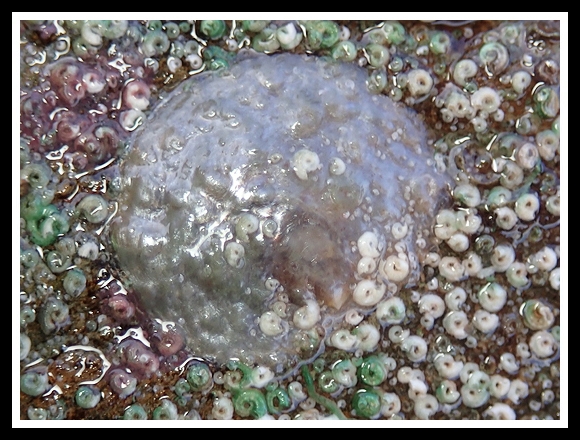 |
| Iceland, S. Norway, British Isles to Angola, Mediterranean. Possibly in southern Caribbean. Suspension feeder, from intertidal to 20m deep, rare beyond this limit. Tolerates brackish waters. The species lives attached to stones, wrecks, Laminaria stubs or other shells; hence it is extremely variable in shape and also in colour. – Above: on shallow rock, south of Ochinese, Gulf of Saint-Florent, N. Corsica. Original picture provided by D. Renoult for iNaturalist – (CC BY-NC). |
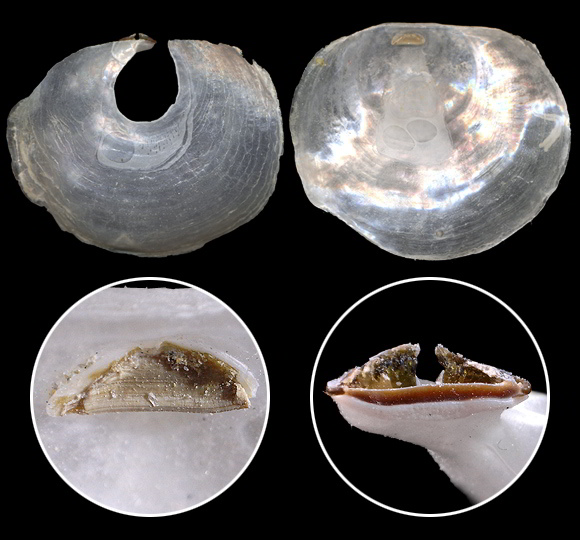 |
Synonyms: violacea, tunicacepae, sulcata, radiata, pellucida, cepa, aspera… This is the only member of this epifaunal genus in european waters. The name Anomia refers to the absence of definite shape in these animals, which adapt their shells to their support: a stone, a scallop, a pebble, a rock, a whelk etc. The species exists since the upper Oligocene (28 Ma).
A specimen from Irish Sea. Beachstormed, northern end of Port Erin beach, Isle of Man. 38mm. |
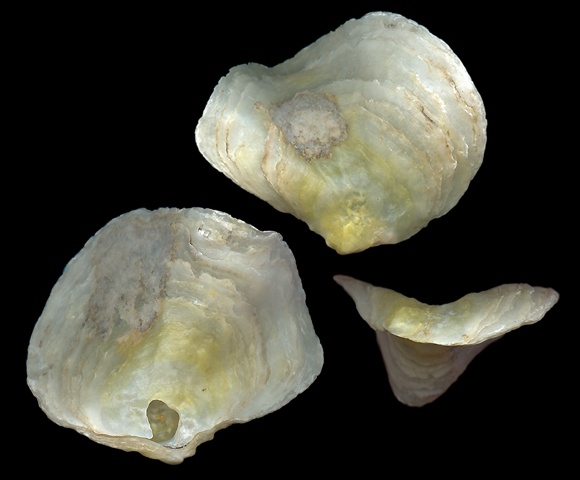 |
| Variants argentina, convexa, cuprea, patellaris, sanguinea, saxicola etc… A nice “citrina” fished at 20-30m deep, off Chioggia, Venezia, NE. Italy. 70mm. |
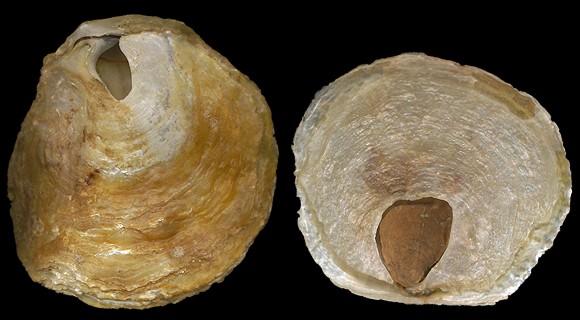 |
| Two large specimens trawled at 20m deep, off Almería, Andalucia, S. Spain. 52-55mm. |
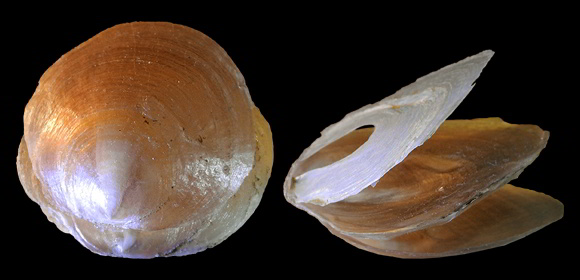 |
| 12m deep, on Bivalve, Málaga, Andalucia. 46-48mm. |
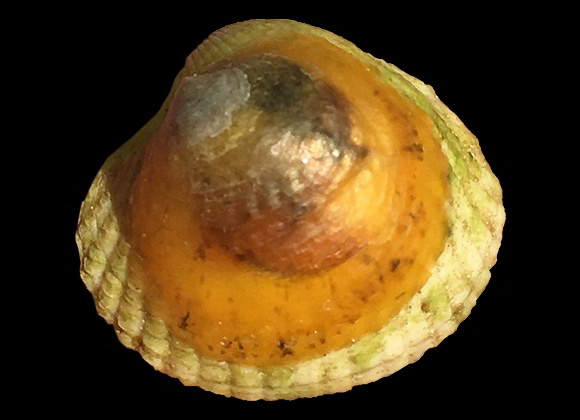 |
A young specimen on a valve of Cerastoderma glaucum (Bruguière, 1789) collected at the mouth of the Lagoa de Albufeira, Sesimbra, Setúbal peninsula, Lisboa, Portugal. Original picture provided by A. Xeira for iNaturalist.
– (CC BY-NC) – |
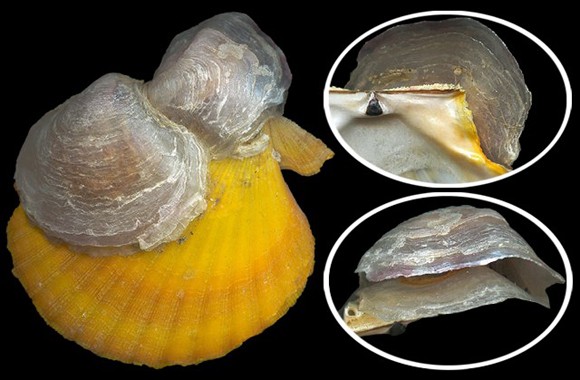 |
| Two specimens attached to Aequipecten opercularis (Linnaeus, 1758), trawled off Cancale, N. Brittany. 25-35mm. |
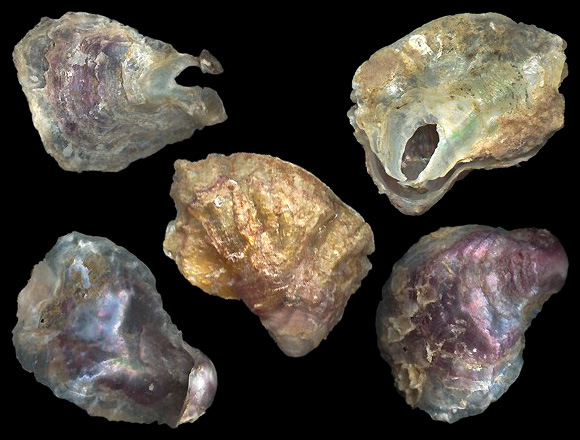 |
| Specimens from Gorée Island, Dakar, Sénégal. 47-48mm. |
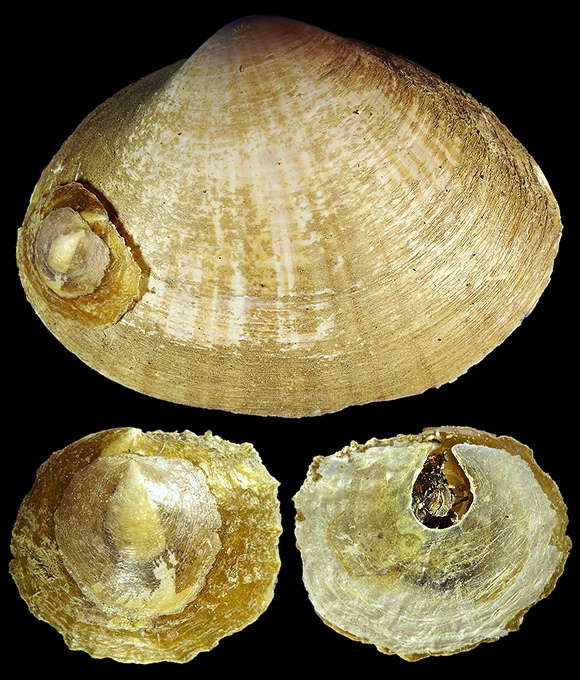 |
Anomia ephippium (11,7mm) on Anomia ephippium (19,4mm), on Mactra glauca (114mm). La Franqui, Leucate, Occitania. Original pictures provided by S. Clanzig.
– CC BY-NC-SA) – |
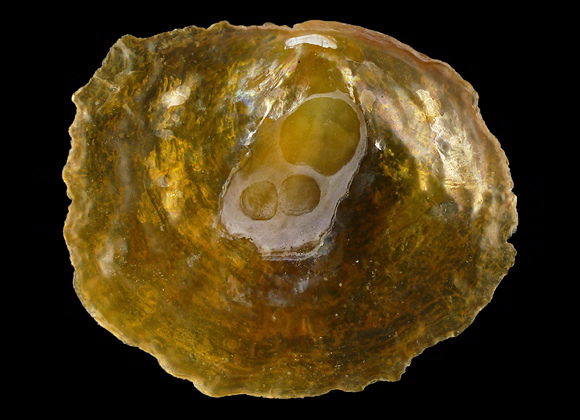 |
Detail of the largest specimen.
The three muscular prints on the left valve sign the genus Anomia. Original picture provided by S. Clanzig (FR).
– CC BY-NC-SA) – |
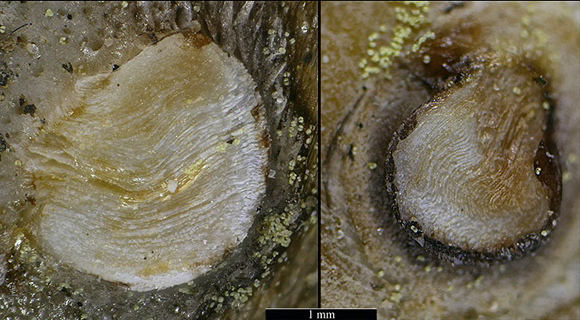 |
« The calcified byssus of Anomia ephippium is an exception in the world of bivalves. At almost 98% composed of aragonite, it is hard and serves as a gate to the passage in the fixed valve. It is terminated by a kind of ossicle encrusted in the substrate. This has the effect of fixing the animal throughout his life. » ( DORIS). – Same specimens: the base of the byssus in the large one (left) and in the small one (right). Original pictures provided by S. Clanzig (FR) – (CC BY-NC-SA). |
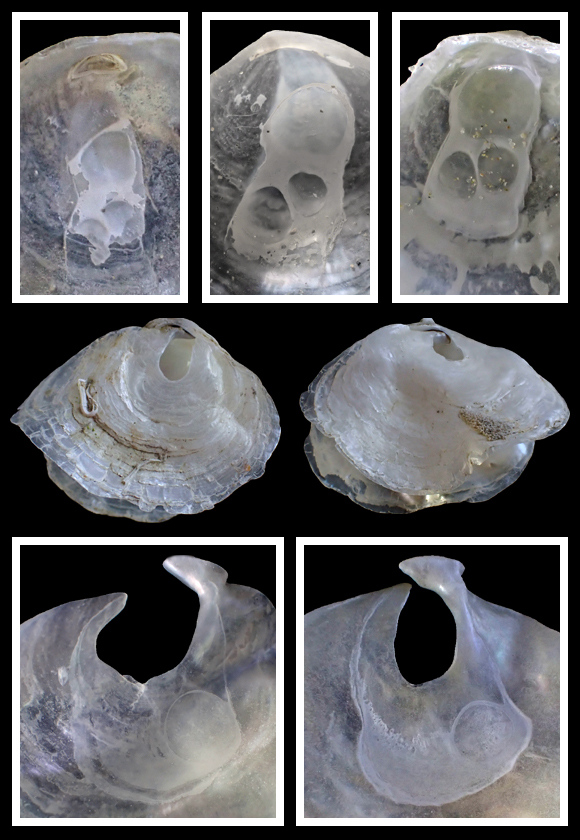 |
Variations of shape in the species.
The variant ex colore “argentina” is more common in the north (here: English Channel) than in the south. |











